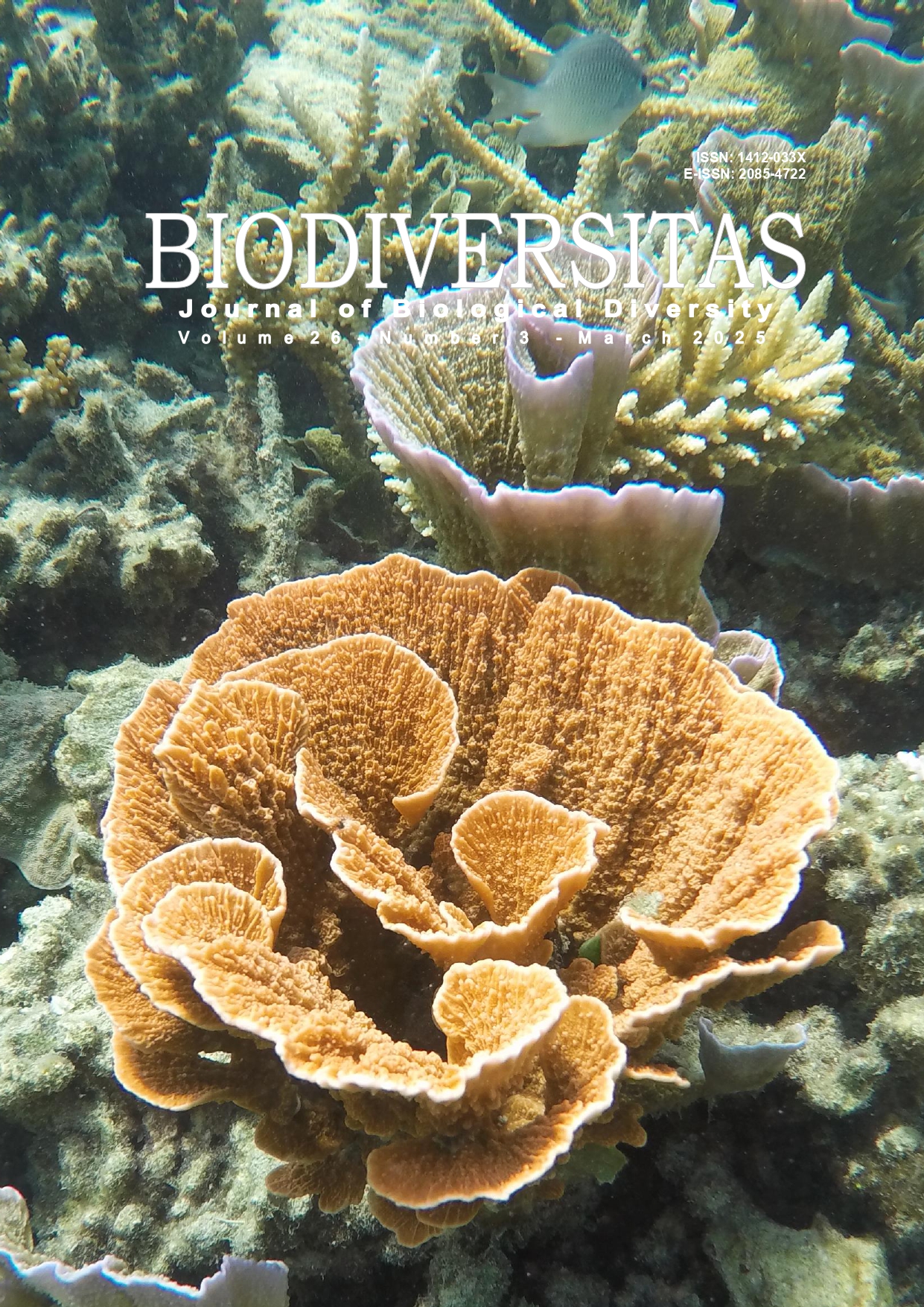Current distribution and habitat suitability for the present and future scenarios of Cyrtodactylus angularis in Thailand
##plugins.themes.bootstrap3.article.main##
Abstract
Abstract. Khajitmathee N, Kaewtongkum N, Chaiyes A, Suksavate W, Duengkae P, Sribandit P, Phochayavanich R, Chuaynkern C, Chuaynkern Y. 2025. Current distribution and habitat suitability for the present and future scenarios of Cyrtodactylus angularis in Thailand. Biodiversitas 26: 1039-1050. The genus Cyrtodactylus, with approximately 381 species, is among the most speciose in the family Gekkonidae. Cyrtodactylus angularis, an endemic species of Thailand, was assessed for habitat suitability using Ecological Niche Modeling (ENM). This study evaluates the species' potential risks under current and future environmental conditions. Species identification was based on photographic evidence and morphological traits. The MaxEnt model was employed to estimate the species' potential distribution. The analysis identified dry evergreen forests as the primary environmental variable influencing habitat suitability, showing a strong positive correlation with the species. The current habitat suitability area for C. angularis is estimated at 5,879.51 km². Under future climate scenarios, habitat suitability areas are projected to decrease significantly. By 2050, the habitat suitability areas are expected to shrink by 372.00 km² (-6.33%) under SSP2-4.5 and 2,121.69 km² (-36.09%) under SSP5-8.5. 2070 further reductions are anticipated, with declines of 2,120.05 km² (-36.06%) under SSP2-4.5 and 5,309.17 km² (-90.30%) under SSP5-8.5. These projections highlight the substantial threat climate change poses to the species' habitat. The Phu Khiao-Nam Nao and Dong Phaya Yen-Khao Yai Forest Complexes are identified as key potential preserves for C. angularis. We recommend prioritizing these areas for conservation efforts to protect the species from future environmental changes. Additionally, intensive surveys across the species' full range are essential to enhance our understanding of its ecological niche. Expanding occurrence data from under-surveyed regions will improve habitat suitability models and help identify critical microhabitats, supporting more effective conservation planning.

